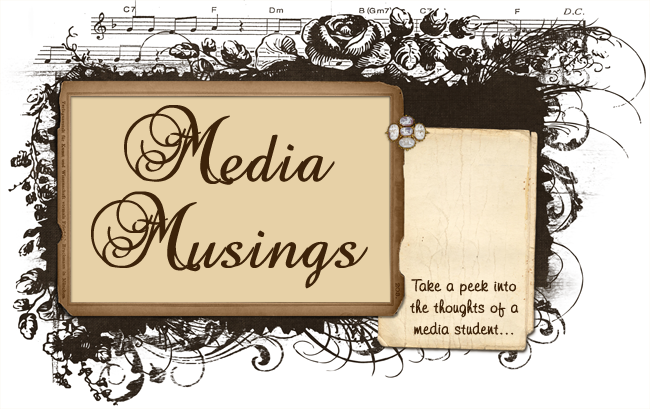 (Image source: NowPublic, 2008)
(Image source: NowPublic, 2008)How many times have we bought a magazine, enticed by its glossy sheen and alluring model(s) on the cover, only to go home, flick through the pages and then leave it under the coffee table to be forgotten until the next spring cleaning session? Many of us are, or have been, guilty of this exact scenario, but all that might soon change.
Susan Currie Sivek’s article entitled “Magazines Require Innovation, Experiments in Digital and Print”, dated 1 April 2010 and published in MediaShift, talks about how traditional print magazines are beginning to innovate themselves in the digital media world and experiment with the different ways of storytelling styles, platforms, formats and revenue streams that new media has to offer. The Innovations in Magazines 2010 World Report which was released on 1 March 2010 could be the turning point for the magazine industry, as it provides many creative methods which aim at to make magazines fresh and new in an increasingly competitive media environment. Two other crucial points in the article are about how magazines still play a qualitative role in the print and media industry, and the fact that the digital revolution can save the environment by reducing the use of paper for print.
An article (Johnson-Greene, 2010) published in Folio mentions that Josh Gordon, president of Smarter Media Sales.com, and Raymond Roker, CEO/founder of URB magazine have suggested 4 tips for building a digital edition audience, which can be applied to magazines as well as other types of online media publishing. These 4 tips include:
• Attract readers with exclusive “digital extras”.
• Disregard the age demographics of online readers.
• Choose a host, partner or vendor carefully.
• Sharing is caring; social media is the best way to promote and advertise your productions.
In my opinion, it is only natural that magazines (and other traditional print media) extend their reach into the digital media world and innovate themselves to suit the habits and expectations of today’s audience. As Kress (1997) states, modern technologies make it simple to combine various modes of media publishing, which are likely to produce convergence or multi-modality in media.
Besides that, Walsh (2006) also points out that reading text on in a book and reading a page or website on screen are two very different experiences. Readers of a book are obliged to follow the linear style of the text, whereas the scanning pathway of internet browsers can be multilinear and multi-directional. Therefore, magazine publishers should make full use of new media technology to innovate their productions and ensure the continued support of their readers.
References:
Susan Currie Sivek’s article entitled “Magazines Require Innovation, Experiments in Digital and Print”, dated 1 April 2010 and published in MediaShift, talks about how traditional print magazines are beginning to innovate themselves in the digital media world and experiment with the different ways of storytelling styles, platforms, formats and revenue streams that new media has to offer. The Innovations in Magazines 2010 World Report which was released on 1 March 2010 could be the turning point for the magazine industry, as it provides many creative methods which aim at to make magazines fresh and new in an increasingly competitive media environment. Two other crucial points in the article are about how magazines still play a qualitative role in the print and media industry, and the fact that the digital revolution can save the environment by reducing the use of paper for print.
An article (Johnson-Greene, 2010) published in Folio mentions that Josh Gordon, president of Smarter Media Sales.com, and Raymond Roker, CEO/founder of URB magazine have suggested 4 tips for building a digital edition audience, which can be applied to magazines as well as other types of online media publishing. These 4 tips include:
• Attract readers with exclusive “digital extras”.
• Disregard the age demographics of online readers.
• Choose a host, partner or vendor carefully.
• Sharing is caring; social media is the best way to promote and advertise your productions.
In my opinion, it is only natural that magazines (and other traditional print media) extend their reach into the digital media world and innovate themselves to suit the habits and expectations of today’s audience. As Kress (1997) states, modern technologies make it simple to combine various modes of media publishing, which are likely to produce convergence or multi-modality in media.
Besides that, Walsh (2006) also points out that reading text on in a book and reading a page or website on screen are two very different experiences. Readers of a book are obliged to follow the linear style of the text, whereas the scanning pathway of internet browsers can be multilinear and multi-directional. Therefore, magazine publishers should make full use of new media technology to innovate their productions and ensure the continued support of their readers.
References:
- Johnson-Greene, C 2010, 4 Tips for Actively Building A Digital Edition Audience, FolioMag, viewed 11 June 2010, http://www.foliomag.com/2010/4-tips-actively-building-digital-edition-audience
- Kress, G 1997, 'Visual and verbal modes of representation in electronically mediated communication : the potentials of new forms of text', in Page to screen : taking literacy into the electronic era, ed I Snyder, Allen & Unwin, St. Leonards, N.S.W.
- Sivek, SC 2010, Magazines Require Innovation, Experiments in Digital and Print, Public Broadcasting Service (PBS), viewed 11 June 2010, http://www.pbs.org/mediashift/2010/04/magazines-require-innovation-experiments-in-digital-and-print091.html
- Walsh, M 2006, 'The 'textual shift': Examining the reading process with print, visual and multimodal texts', Australian Journal of Language and Literacy, vol. 29, no. 1, pp. 24-37.


No comments:
Post a Comment